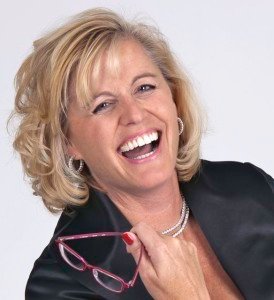Not a Solo Flight by Catharine Bramkamp
 Let’s welcome back monthly columnist Catharine Bramkamp as she shares with us “Not a Solo Flight!” Enjoy!
Let’s welcome back monthly columnist Catharine Bramkamp as she shares with us “Not a Solo Flight!” Enjoy!
***
DON’T GO SOLO
We all know the legend of Jack London the adventurer and prodigious writer. He is held up to authors as the epitome of the writer’s work ethic, publishing 50 fiction and nonfiction books, and hundreds of articles. He made his living by writing and always, always writing at least a 1,000 words a day. That is an impressive output not only for the number but for the consistency. 1,000 words!
On first glance, London represents impossible goals. Fifty books! But how could anyone match that? You can.
Recycle
Both Jack and his wife re-purposed their adventures into many version of essentially the same book. The travels of the Snark inspired a number of related books all covering the same material including Charmaine London’s version provocatively titled: Woman among the Headhunters. Like so many best selling authors, London created many books from a single theme.
But still, he wrote and he sailed the adventures; he had the ideas. All deserving of praise and acclaim. I love his work, no question. But, I also don’t want any author to think that Jack woke up each morning at Beauty Ranch and simply created his literary success all by himself.
He did not.
Let’s begin with that 1,000 words a day.
Clear the Decks
No matter the guest count that week, no matter what the crisis at the ranch, no matter what was for breakfast, Jack wrote.
His work supported the whole enterprise of course, and writing was his job. But do consider who made those 1,000 words a day possible:
- His ranch manager.
- The staff.
- The ranch workers and their families.
- His wife.
- The cook.
Someone took care of all the daily challenges that arise on a working ranch. Someone make breakfast and cleaned up afterwards. His wife protected his time and entertained the weekend guests until Jack was finished.
Use a Typist
Jack could write, but not fast enough. He worked out his books long hand. It was his wife, Charmaine, who typed up the drafts of the manuscripts, editing along the way. She was involved in his work from the start, and wrote her own stories after his death.
Even in the creation of his books, Jack was not working alone.
Now that I’ve thrown poor London under the bus, here are more people nestled in the anonymity of the acknowledgements page of most books.
Researchers
Research comes from volunteers, helpers, or paid professionals. For authors, everyone and anyone is a resource. Jack discovered those stories on the islands of the South Pacific, and the bars in Alaska. Some authors who write multiple books a year, hire profession researchers. If you are very lucky, you can exploit your own high school children as research assistants and pretend it’s an educational experience.
Room Of Your Own
Behind every great writer is a spouse keeping the children quiet, or a beloved aunt who left them enough cash to live on while they worked. I have a husband who supports the arts. We all have some kind of help. Don’t think authors are doing this all on their own.
Editors
There could be up to three people involved in the editorial process. Authors need editors. From beta readers to copy editors, these wonderful people are critical.
Promotors/PR
A group or an individual needs to promote the author. An author often does this work herself, but again, if you are published consistently enough, or are lucky to have a team at your disposal, a PR expert is key to the success of the book.
Social Media
First you need to start up the social media projects, then, if you are lucky, and I mean that – lucky – you will collect rabid fans in the thousands who will spread the word about your project or book. These fans are unsung and unacknowledged and increasingly, critical.
Agent
In Jack’s day, literary agents were more like a personal manager. Agents protected the author, negotiated for better royalties, negotiated with the publishers and the press, sometimes advanced the author funds out of the agent’s own pocket and helped the author decide on the next book. It’s different now, but also the same – successful authors have that team member.
Publisher
All authors need a delivery system for their books. It can be done through one of the big New York publishers or the largest one of all – Amazon – but again, people behind the scenes are assembling your book and shipping it out and sending you money.
Book Sellers
If your book is featured in a bricks and mortar store, the owner and staff of that store will help sell your book. Smart authors do not forget this. In Powell’s (Portland), there was a note tacked onto the end of a bookshelf – a card from Sue Grafton: T is for Thank You.
Artists
Can you design your own book cover? Canva options aside, no you can’t. Get help. Those beautiful book covers illuminating pages of Amazon offerings? All professionally done.
A section in Poets and Writers magazine lists new and noteworthy books.The listing includes the first line of the book, then the top people involved in bringing that book to readers: Publisher – Author – Agent – Editor – Publicist. It takes a team, or even in some cases, a village.
London had a village. Virginia Woolf had a village.
It takes a rather large population to bring a book to market. We think of writing as a solitary affair, and the American myth of complete self sufficiency is still very powerful, particularly when it comes to writing. But the myth is wrong. Authors not only need to be competent at their work and careful in their craft, but also able to coordinate the multitude it will take to bring a book to market.
It’s daunting, but nice to know we are not alone.
***
ABOUT THE AUTHOR
 Catharine Bramkamp is the co-producer of Newbie Writers Podcast that focuses on newer writers and their concerns. She is a successful writing coach, Chief Storytelling Officer, and author of a dozen books including the Real Estate Diva Mysteries series, and The Future Girls series. She holds two degrees in English and is an adjunct university professor. After fracturing her wrist, she has figured out there is very little she is able to do with one hand tied behind her back.
Catharine Bramkamp is the co-producer of Newbie Writers Podcast that focuses on newer writers and their concerns. She is a successful writing coach, Chief Storytelling Officer, and author of a dozen books including the Real Estate Diva Mysteries series, and The Future Girls series. She holds two degrees in English and is an adjunct university professor. After fracturing her wrist, she has figured out there is very little she is able to do with one hand tied behind her back.







Could be argued that Isaac Asimov is a better example.
He was one of the “Big Three” hard science fiction writers of his era, Asimov is credited with over 500 published works covering almost the entire Dewey Decimal System.
Source: http://www.barnesandnoble.com/blog/6-of-the-most-prolific-authors/